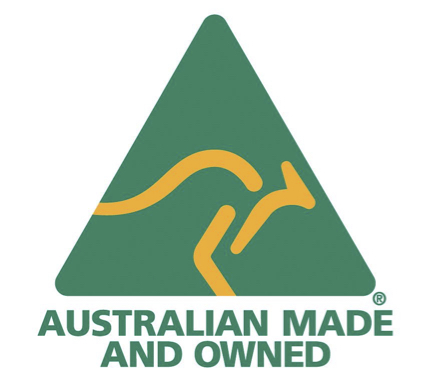Radiant Floor Heating: The Economical and Efficient Way of Heating by Devex Systems
There’s no question that the heating system you choose for your home will be a long term investment, so it’s important to find a product that enhances the quality and comfort of your home and doesn’t take away from it.
There are not many heating solutions that efficiently heat a room from the ground up. Most products only heat the air, increasing the likelihood of heat loss and causing energy bills to be higher than necessary, but thanks to the science of radiant heat, floor heating warms people and objects – not the air. This makes floor heating a much more efficient heating option and a safe bet for a gentle, lasting and uniform heat distribution across your entire floor surface. Floor heating systems are virtually silent and won’t dry the air or circulate unwanted dust/allergens like forced air, portable or fan heaters.
Common forms of traditional heating like conventional radiators and forced air systems can be inefficient due to the immediate heat loss that occurs as the heat cools to meet the existing air temperature. These systems do not distribute heat evenly throughout the room because the heat is usually released from a point location as opposed to uniformly throughout the floor surface, making it more challenging to reach a desired level of comfort for an extended period of time.
Floor heating hinges upon the idea of invisible heat, meaning that heat can be felt not seen – so you can do away with any free standing heaters or vents that are an eye sore to your home and add unwanted clutter to your living space. Given that hot air rises, floor heating will heat the room from the ground up – a popular feature for those that tend to have cold feet and a great way to ensure comfortable, lasting warmth. This form of heating continues to grow in popularity in many parts of Australia thanks to the temperate climate in the mid to south-east and south-west parts of the country.
Your Floor Heating Options – Electric or Hydronic
There are two options for floor heating – Hydronic systems or Electric systems. Both systems are embedded under the floor structure. Depending on your budget and the application, you may find a particular system is more suited to your needs.
Electric floor heating goes particularly well under hard floor surfaces making it ideal for bathrooms, ensuites and laundry rooms, while hydronic floor heating systems are a great option for large areas and multi-story homes.
Anyone working on the hook up of your floor heating system, should be a licenced professional and must comply with all Australian electrical standards for electric floor heating and both electric and gas standards for hydronic floor heating.
Electric floor heating is a great option for bathrooms and living spaces and is commonly used in retrofit projects. It is equally as suitable to both small and large areas from 1m2 upwards. They are extremely reliable and are incredibly flexible in terms of size, shape design and compatibility with different surface coverings. They are easily controlled and are operated by a simple “on” and “off” switch that is usually paired with a manual or programmable thermostat.
How it works:
Systems: In-Screed, In-Adhesive, In-Slab, Under Timber
Depending on the application and personal preference of the home owner, either of these systems can be installed using loose cables or mats. There are generally three different systems that can suit particular design requirements:
Electric Heating Cables in SCREED BED
- In screed heating consists of heating cables fixed on top of the floor structure using a light steel mesh or fixing strips. The cables are embedded in a sand/cement bed which then becomes heated and warms the floor covering. In screed heating is considered to be a ‘direct’ acting system although it does have some storage. This system is the best option for rooms that have some flexibility in the height of the floor. Typically embedded in 20-30 mm of screed, usually at the time of construction, these systems can raise the floor of an existing room by 30 mm in addition to the floor tile. The benefit to this system lies in its ability to hold the heat for a much longer period of time when compared with an adhesive system. Generally speaking, these systems take up to 1.5 hrs. to heat up and will give off heat for the same period of time once the system has been turned off. This system works well for areas that are irregularly shaped and installation is recommended by a trained professional.
Electric Heating Cables in CONCRETE FLOOR SLAB (“storage system”)
- In slab heating consists of heating cable that is typically fixed to the top layer of the slab reinforcement, prior to the slab being poured. The heating cables heat up the slab, in turn warming the floor covering above. Cables are laid on the top mesh in about 30-40 mm of concrete and run during off-peak hours to cut energy costs and maximize the efficiency of the system. During peak hours, the system runs on the stored energy accumulated during off-peak hours. This system is usually used in new construction before the slab is laid.
Electric Heating Cables in TILE ADHESIVE
- Under tile heating consists of a thin heating cable pre-laid on a self-adhesive fibreglass mesh. It sits in the glue or levelling screed which then becomes heated and warms the floor covering. Cables can be placed in a tile adhesive of at least 5 – 15 mm depending on the design requirements of the room and the personal preference of the home owner. An ideal option for retrofit and new construction projects, this “on-demand” system is quick to respond to a change in the thermostatic reading. Located immediately under the heated surface, it tends to be the fastest floor heating system on the market. One thing to keep in mind with this particular system is that installation costs can be a bit on the high side, but running costs have the potential to be quite low.
Electric Heating Cables WITH INSULATION FOR UNDER FLOATING TIMBER FLOORS
- This system consists of heating cables that are fixed to an insulated panel that is specifically designed to spread the cable out at 100 mm centres. Recommended for use under manufactured floating timber floors, the panel’s polystyrene insulation ensures that any heat loss downwards is minimized and its aluminium surface ensures a uniform distribution of heat transfer to the timber floor.
* Polystyrene insulation is generally recommended at the time of any system installation to minimise heat loss and ensure the highest level of energy efficiency and cost savings.
*It is important to review your state building code before installation to ensure the system complies with current regulations.
For more information follow the link to electric floor heating systems.
Application
Electric floor heating is ideal for bathrooms, ensuites and laundry rooms. It works perfectly under floor coverings such as marble, stone, slate and all varieties of tiles. It’s also fabulous under carpet and timber floors. Please note that if used under carpet, cables must be laid in a sand/cement bed or levelling screed.
Installation
The installation of an electric floor heating system is generally straight forward, although depending on the system, the level of complexity can vary. It is very important that care is taken during the install. It is very important that care is taken during the install to avoid cutting or damaging the cable in any way.
Maintenance
Electric floor heating systems are virtually maintenance free so long as they have been properly installed at the front end with no damages to the cables. If the cable damage is minor, more often than not it can be easily fixed. Once they have been installed, good quality cables have a lifespan of upwards of thirty years.
Cost
Electric floor heating is a cost-effective heating solution when properly used. The upfront cost of an electric system can be much less than that of a hydronic floor heating system, but generally speaking, a hydronic system has lower running costs when calculated over a period of time.
These systems are quite sophisticated in design and consist of the circulation of warm water through an intricate network of polyethylene oxygen resistant piping under the floor surface. This ensures a gentle, warm heat that is evenly distributed throughout the entire living space.
How it works:
Hydronic, Water-Based Systems:
In hydronic floor heating systems, water is warmed to 35-45 degrees celcius using a boiler and circulated at a safe, low pressure through extremely durable plastic pipes laid in or under the floor. This system typically requires a minimum area of anywhere from 60 m2 to 90 m2 to be running at any given time if used with a gas boiler for best results. They are usually installed at the time of construction. They are composed of a network of pipes, valves, manifolds and switches, all of which must work together to heat the zoned areas; there are some restrictions when it comes to zoning preferences as a result. They remain turned on over the duration of the period or season that the floor heating is required providing a constant, gentle heat.
Hydronic Floor Heating IN SCREED
- In screed hydronic heating involves the laying of extremely durable piping on top of the slab and insulation in a sand/cement bed of at least 50 mm in depth and covered by a suitable floor surfacing i.e. marble, stone, slate and all varieties of tiles. This system is generally faster acting than an in slab system. Similar to other systems, this system radiates heat from the floor upwards creating a comfortable, gently heated environment with no draughts, dust or noise. The heating is controlled using floor or air sensing thermostats that regulate the flow of hot water through the pipe circuits.
Hydronic Floor Heating IN SLAB
- In slab Hydronic floor heating is a storage heating system. The slab is heated by pumping hot water through pipes laid in the concrete slab. This process can take one to two days at the beginning of the winter season, depending on the thickness of the slab and the amount of floor insulation used. Once the slab is heated through, it radiates heat from the floor upwards into the room creating a comfortable and gently heated environment with no draughts, dust or noise. The heating is controlled using floor and air sensing thermostats that adjust the flow rate of hot water through the pipe circuits. We recommend extruded polystyrene insulation beneath the slab and on exposed slab edges to minimise system heat loss and ensure the highest level of energy efficiency and cost savings.
Hydronic Floor Heating UNDER BATTENED TIMBER
- Hydronic floor heating can also be used under battened timber floors. The pipes are laid over insulation panels and sit directly beneath the floor boards. The pipes run in between the battens, which are typically laid at 450 mm centres, and pass through small grooves in the battens to cover the entire floor area. The heating is controlled using floor and air sensing thermostats that adjust the flow rate of hot water through the pipe circuits. The thermostats are typically set to a maximum floor temperature of 27°C to ensure the timber is not over-heated. We recommend using diffusion plates in addition to 25 mm polystyrene insulation beneath the pipes. The diffusion plate system consists of aluminium plates with preformed grooves to take the pipe. The aluminium plates transfer the heat away from the pipes giving a uniform heat distribution beneath the timber floor and enabling a more efficient heat transfer to the timber floor.
* Polystyrene insulation is generally recommended at the time of any system installation to minimise heat loss and ensure the highest level of energy efficiency and cost savings.
*It is important to review your state building code before installation to ensure the system complies with current regulations.
For more information follow the link to hydronic floor heating systems.
Application
Hydronic floor heating is a great option for large, open entertaining areas and works well under cold floor coverings such as marble, stone, slate, polished concrete and all varieties of tiles. It’s also fabulous under carpet and timber floors, but keep in mind that there are particular standards and temperature restrictions that must be met when using those particular floor coverings. When using a boiler as the primary energy source, it is important to note that the minimum area that must be running at any given time is between 60m2 – 90m2.
Installation
Installation of a water-based system can be complex due to the intricate design and workings of the system, so it is important to seek out a licenced professional to do the job. Hydronic floor heating systems are generally only used in new projects because they must be a part of the main heating system installed at the time of construction. In some circumstances these systems can be used in retrofit projects but only in a screed bed that is at least 50 mm in depth.
Maintenance
These systems require a certain level of maintenance over the years. The boilers require regular servicing and may need to be replaced after 10-15 years of use. Good quality pipes generally last a very long time. The overall system is known to exceed thirty to forty years in lifespan and similar to electric floor heating systems, they have an extremely good reputation for providing a high level of comfort with fairly low running costs which can result in a fairly high return on investment when measured against other heating solutions on the market.
Cost
Hydronic floor heating can be very economical to run, however, the upfront costs are more costly than electric systems due to the sophistication and intricacy of the design and parts as well as the skilled labour that is required to perform a proper installation. Follow the link for a quote.
Tips for Enhancing the Efficiency of your Floor Heating System
Going Green
Despite the application or the quality of the system you choose, the only way to ensure the highest level of efficiency, cost-savings and comfort is to INSULATE! Stop letting your money “fly out the window” (ceilings, walls or floors)!
Both electric and hydronic floor heating systems should ALWAYS be installed over some form of insulation. As a start, simple Polystyrene insulation is recommended at the time of any concrete slab system installation to minimise heat loss and ensure the highest level of energy efficiency and cost savings. F-Board is a specifically designed, thin board material (from 6mm) that is an excellent insulation product for placing beneath in-screed systems as well as for elements that have been embedded in a tile-adhesive like Xmat.
On both a global and local level, government energy consumption standards continue to tighten and insulation remains an important part of cutting down your energy costs and implementing environmentally responsible heating practices. Heat generated from your floor heating system runs the risk of being lost without insulation. This is especially important in the mid to southern regions of the country where temperatures can dip during the cooler months. In Australia, the level of insulation is generally lower than equivalent climates in North America and Europe. Insulation is designed to be used beneath floor heating systems to minimise downward heat loss and aid in faster warm-up times. Both electric and hydronic floor heating systems should be installed over some form of insulation.
Another factor in ensuring the highest efficiency of your floor heating system is a high quality thermostat. They will allow you to heat specific rooms or areas independently or program them to automatically meet your weekday and weekend lifestyle. You can select from manual or programmable thermostats or incorporate a mix of the two if preferred. A good quality thermostat will allow for greater control over temperature, zoning and timing making it easy for you to make the most out of your floor heating system. Follow the link to our own Xthermostat range.






